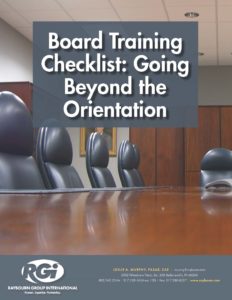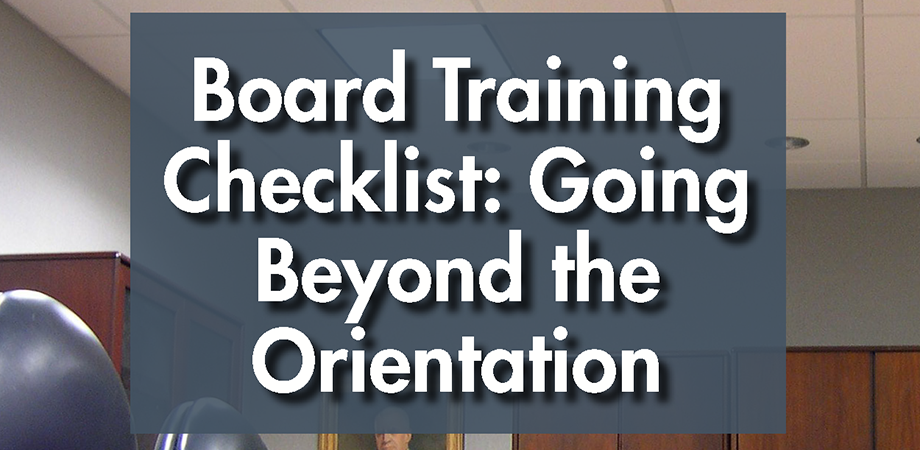The start of a new governance term can be an exciting time. Your board gains fresh ideas and perspectives. New board members start with energy and enthusiasm. Returning board members have renewed optimism. Capture that dynamic to propel your board into a productive year by starting with effective, ongoing, board training.

Written by Amanda Bureau, CAE, CVA & Rachel Daeger, CAE, IOM
WHY
Volunteers are busy people. In a good week, their responsibilities to your association may be their third priority behind their own jobs and families. It can be tempting to simply jump straight to the business at hand, so why use precious time on training? Committing to a board training program can pay dividends in strengthening your board and setting them on the path toward success. In fact, in the long run you could save time by building a more effective board.
WHAT
The outline presented in this e-book provides a framework for your board training program. Use this checklist to build a better training for your board and discover a few elements that may be different than most other board training resources.
WHEN
Most board trainings, if they happen at all, occur just before or at the start of new officer terms. They may range from one hour to one day and most often are a one-shot orientation. Shift your thinking to a year-round board training program to avoid overwhelming new board members, maximize attention and time, and build cohesion among your entire board. There are certainly some topics that need to be covered right away, but some topics can wait until new board members get their feet wet. Other topics can be introduced at the beginning of a term and then covered in more depth later in the year.
WHO
New board members need an orientation, however all board members can benefit from ongoing training. You may face resistance to this (“Why waste busy board members’ time on training when they got an orientation at the start of their terms?”). It is critical to reframe this as not only a standard expectation of board service, but a benefit. Many volunteers get involved because of the personal and professional growth that can occur at this level of service. An ineffective board is a disservice to those volunteers and the association. Involving all board members in some aspects of ongoing training builds a better board. When everyone is reading from the same playbook, they can be in sync with their priorities and perspectives. Understanding association governance and leadership helps them focus on strategic issues. Starting every board meeting with training will frame the rest of the meeting. Your training activity can help board members be more strategic, keep dialogue open, and produce more effective outcomes.
HOW
Just as there are many topics to cover in board training, there are also many ways to deliver continuing board orientation. While it can be tempting to just conduct training in-person, this can be limiting. An international board may only be together once a year. A local board could eat up a lot of time with commuting to frequent meetings. Save topics that need interaction and dialogue for the limited time you have in-person. There are many other ways to deliver training throughout the year. Consider conference calls, live and recorded webinars, podcasts, video messages, or even an asynchronous classroom. Mix up your delivery methods to keep ongoing training interesting and meet the needs of different learning styles.

